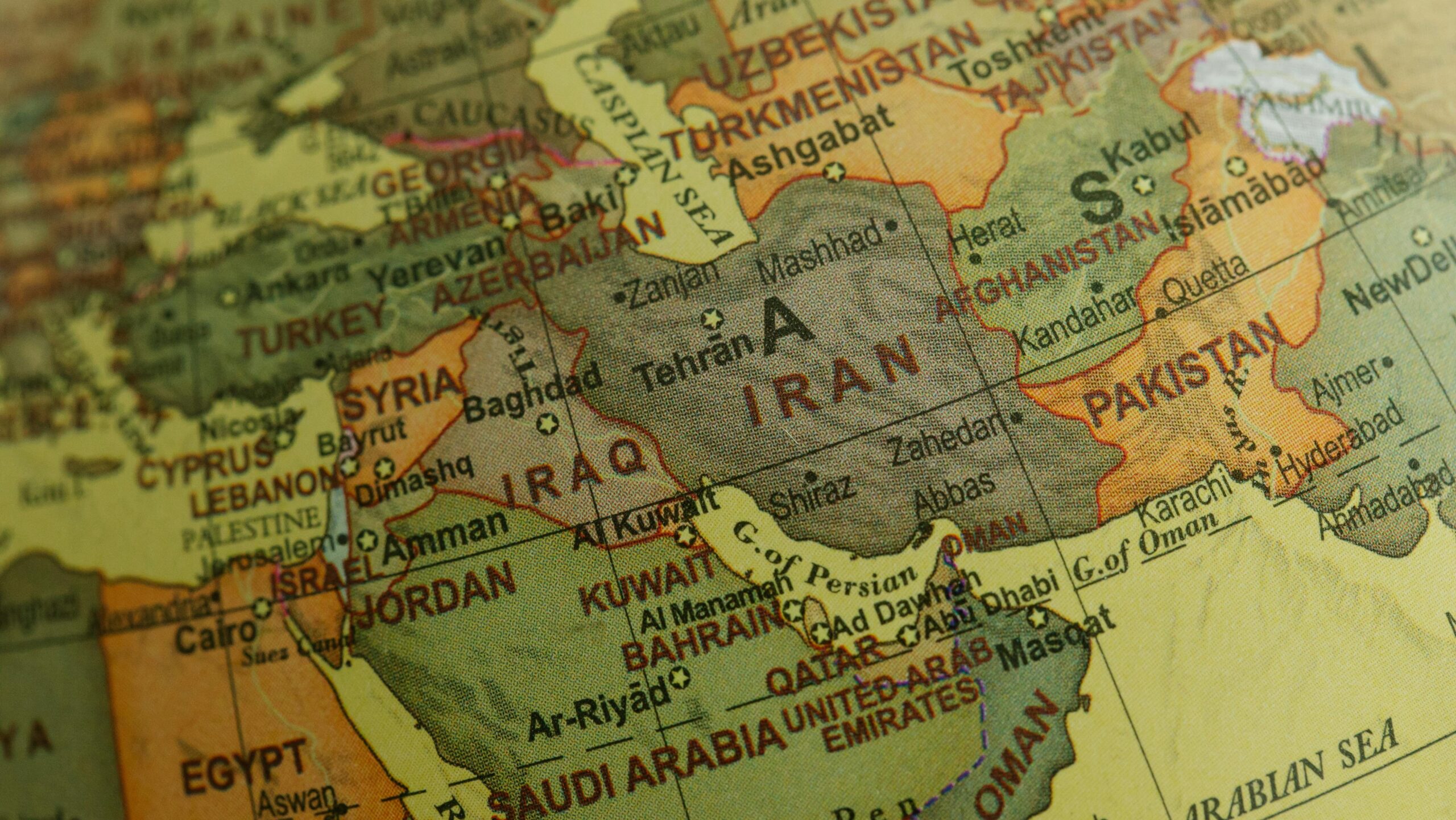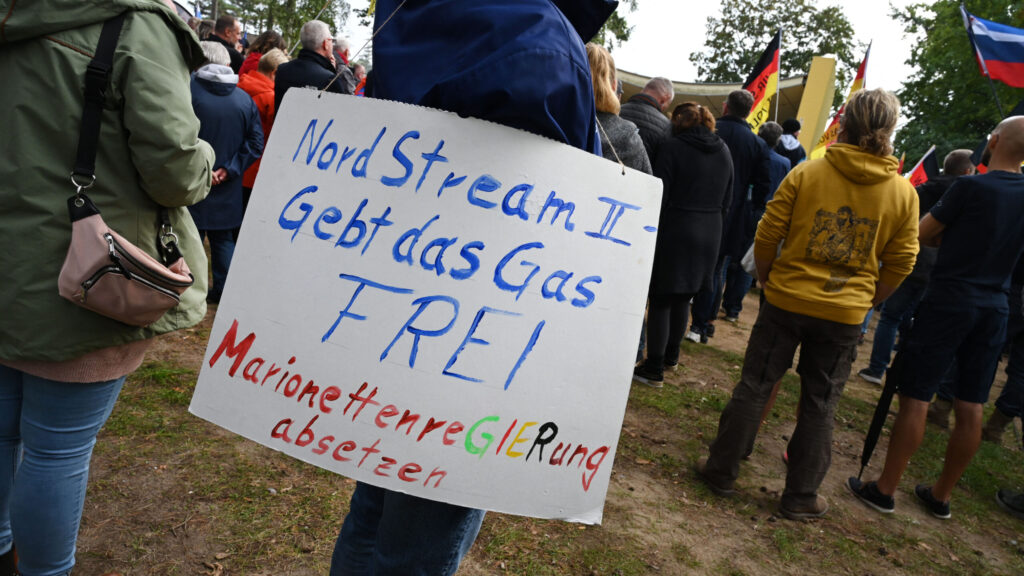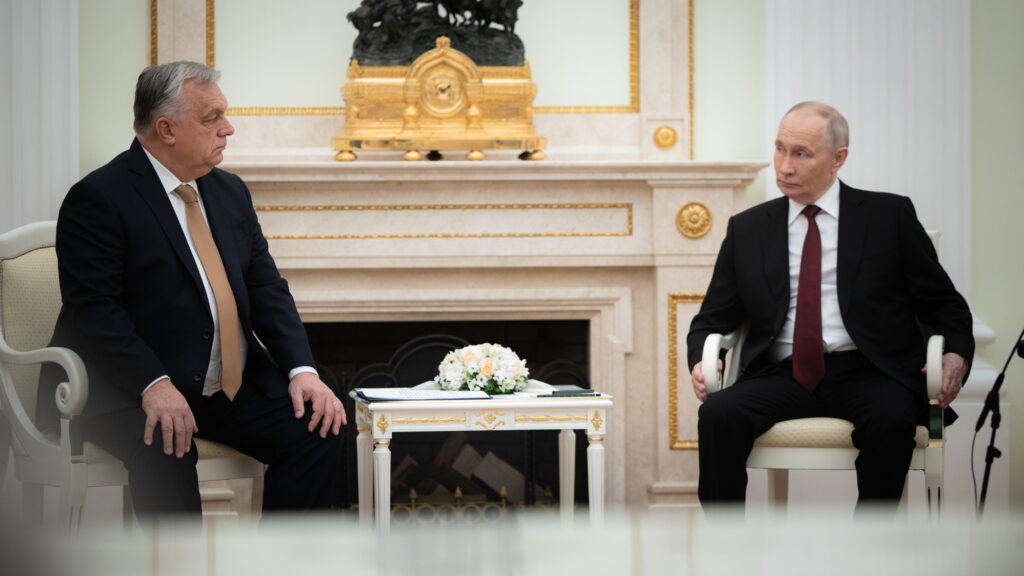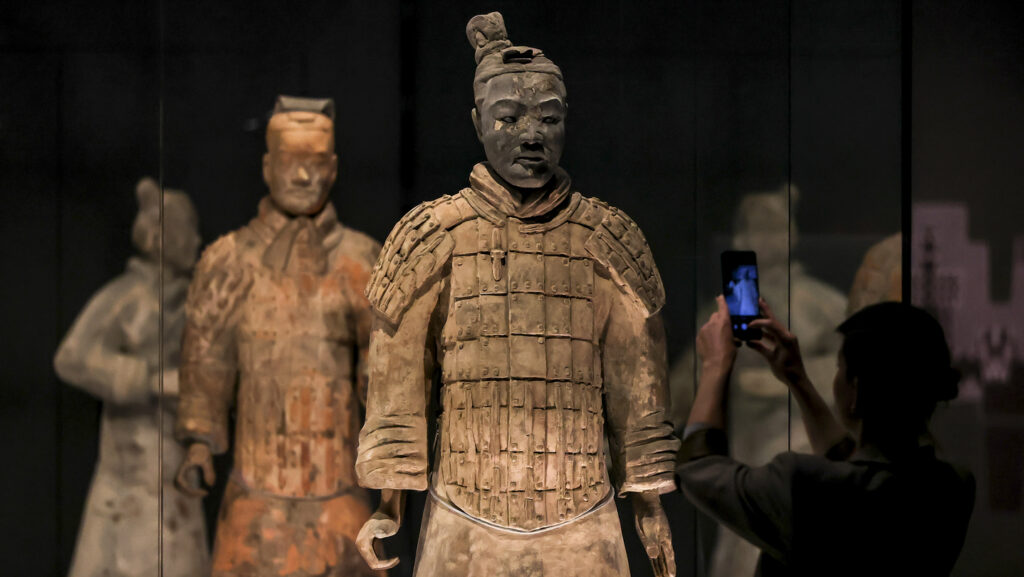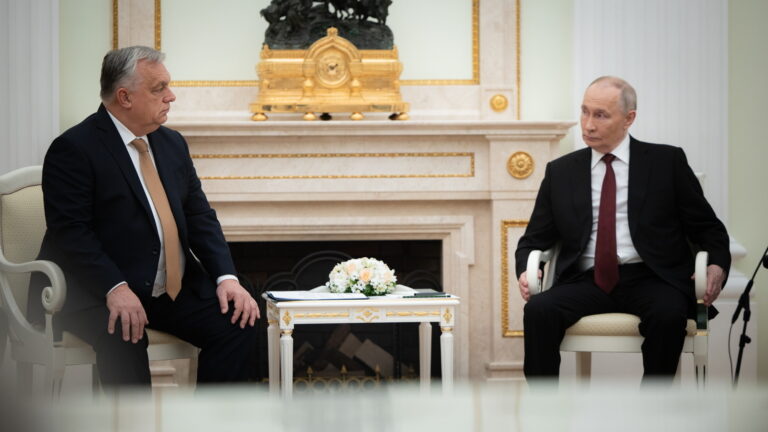The Iran–Israel conflict, now a mid-scale war since June 13, 2025, has erupted into a defining crisis in global geopolitics. With intense rocket barrages, airstrikes, and cyberattacks causing significant casualties and igniting international alarm, the conflict has reshaped the Middle East’s security landscape. For Western conservative foreign policy, this war represents a critical juncture, exposing deep ideological divisions and forcing a reckoning over America’s global role. This essay intertwines personal family history with a strategic analysis, focusing on the conservative foreign policy debate and the broader geopolitical implications, particularly Russia’s weakened position and the challenges facing key conservative figures like US President Donald Trump and Hungarian Prime Minister Viktor Orbán.
A Personal Anchor: The Legacy of the Iranian Revolution
My perspective on Iran is rooted in the seismic upheaval of the 1979 Iranian Revolution, a cataclysm that profoundly shaped my family’s trajectory. My grandfather, a military officer under the Shah, served a modernizing nation with pride, training at elite American military academies during a period of strong US–Iran ties. His career embodied the aspirations of a progressive Iran, but the revolution shattered this vision. The rise of the Islamic Republic stripped away his wealth, status, and homeland, forcing our family into exile. His stories of a dynamic, forward-looking Iran stand in stark contrast to the theocratic regime of today, leaving a lasting imprint on my worldview. I remember how his voice would change when he spoke of Tehran’s boulevards in spring or the officer corps’ pride before it all fell apart. He never asked for pity—only for memory. And in moments like this, when his homeland burns once again, I feel the ache of exile not as history, but as present reality.
This history is not just a footnote—it informs how I view Iran today. While I aim for impartiality, my family’s experience inevitably colours my perspective on Tehran’s regime. Yet, this is not a call for vengeance or a simplistic push for regime change. Instead, it’s a starting point to explore how personal narratives intersect with the broader strategic questions posed by the Iran–Israel conflict, particularly for conservatives grappling with their role on the world stage. It highlights the reality that behind geopolitical abstractions lie deeply personal stories and traumas.
This personal lens naturally leads to a wider discussion: how do conservatives in the West navigate foreign policy in an era of rising global tensions?
Iran’s Theocratic Regime: The Strategic Core of the Conflict
The Iran–Israel war is inseparable from the ideological framework of Iran’s theocratic regime, rooted in Ayatollah Khomeini’s 1979 doctrine of Velayat-e Faqih—the ‘Guardianship of the Jurist’. This principle grants ultimate political authority to a senior Islamic cleric, currently Ayatollah Ali Khamenei, fusing religious legitimacy with unchecked political power. It rejects Western pillars like secularism, popular sovereignty, and institutional checks and balances, creating a system in which dissent is not merely criminalized but framed as heretical. For Western observers, especially conservative policymakers, grasping this structure is vital: Iran is not just a hostile state—it is a theocratic project, impervious to conventional diplomatic logic and structurally resistant to liberalization. For my own part, this vindication demands candour. Over the past years, I have increasingly aligned myself with the non-interventionist school—convinced, not without reason, that the legacy of Iraq, Afghanistan, and Libya argued forcefully for restraint. Those were strategic and moral failures, and they must not be forgotten. But Ukraine is not Iraq. The current trajectory suggests that, under certain conditions, calibrated engagement—anchored in strategic clarity rather than ideological overreach—can reshape broader theatres of conflict. That is not a call to abandon caution, but a reminder that doctrine must be tested against evolving reality. Principles endure, but prudence sometimes requires adjustment.
This fusion of theology and statecraft presents a unique challenge to the West. The Supreme Leader’s control over the judiciary, military, intelligence services, and media enables an authoritarian coherence that frustrates reform and resists external pressure. It also shapes Tehran’s foreign policy: Iran’s support for proxies, its nuclear ambitions, and its posture toward Israel are not strategic anomalies but outgrowths of an ideologically rigid regime. For conservative foreign policy thinkers, engaging with Iran requires more than realist calculus—it demands recognition that the Islamic Republic operates from a worldview where religious authority trumps state interest. Misreading this core truth risks repeating the strategic naivety of past Western approaches.
This ideological entrenchment explains why internal reform has remained elusive and why external pressure—however calibrated—often hardens rather than weakens the regime’s grip. Yet, amid the rigidity of Velayat-e Faqih, an alternative vision persists: one rooted not in religious authority but in national self-determination. Reza Pahlavi, son of the deposed Shah, embodies that counter-narrative. Unlike the clerical elite, his appeal is not grounded in theology but in the promise of institutional pluralism and civic choice. He offers a vision of Iran in which citizens—not clerics—shape the state’s identity, choosing between a constitutional monarchy or a republic. While some dismiss this vision as nostalgic or unrealistic, it remains the only articulated model with deep roots in Iran’s pre-revolutionary experience and resonance among parts of the diaspora.
‘The Islamic Republic operates from a worldview where religious authority trumps state interest’
Critically, this vision draws on Iran’s millennia-old tradition of statecraft. For over 2,500 years—from Cyrus the Great’s Achaemenid Empire to the Pahlavi dynasty—monarchy served as Iran’s primary governing framework. These eras frequently coincided with periods of remarkable stability, economic prosperity, and even progressive governance. The Achaemenids pioneered human rights principles—as enshrined in the Cyrus Cylinder—the Safavids fostered artistic renaissance and religious coexistence, and the Qajars modernized infrastructure. Under the last monarchical system, Reza Shah and Mohammad Reza Pahlavi advanced women’s rights, secular education, and industrialization, positioning Iran as a regional powerhouse. This historical precedent underscores that a constitutional monarchy isn’t merely nostalgic but a proven model of Iranian sovereignty and resilience.
From Theocratic Fortress to Global Fault Lines
Ayatollah Khomeini’s Velayat-e Faqih, a doctrine that cloaks political power in divine authority, is not merely a domestic cage—it’s a catalyst for Iran’s belligerent stance, fueling its proxies and nuclear ambitions in defiance of the world. Yet, this ideological fortress, unyielding in its rejection of secular compromise, does not stand alone. It is a linchpin in a fragile web of global alliances, where Iran’s defiance amplifies its strategic weight but also exposes its vulnerabilities. As the Islamic Republic battles Israel, its fate ripples through the great-power balance, straining the bonds with its closest ally, Russia, whose own power wanes under the grind of war in Ukraine. The same theocratic rigidity that drives Iran’s confrontation with the West now tests the limits of Moscow’s influence, pulling the Middle East into a broader geopolitical maelstrom where old partnerships falter and new opportunities emerge for those who can navigate the shifting tides.
Strategic Dimensions: Russia’s Weakened Position
The fall of Bashar al-Assad’s regime in Syria in December 2024, a longtime Russian ally, exposed Moscow’s inability to sustain its regional proxies, marking a strategic defeat. Iran, Russia’s closest Middle Eastern ally, now faces a similar fate. The January 2025 strategic partnership agreement between Moscow and Tehran formalized their ties but lacked a mutual defence clause, leaving Russia unobligated to intervene militarily on Iran’s behalf. Russia’s preoccupation with Ukraine, coupled with its reliance on Iranian drones for its war effort, has further constrained its ability to support Tehran. The war’s escalation has weakened Iran’s military capabilities, with Israel’s strikes degrading its air defences and nuclear infrastructure. This development threatens Russia’s strategic position, as the potential collapse of the Islamic Republic would represent the loss of its most significant regional partner.
Russia’s weakened state has broader implications for the global balance of power. The war in Ukraine has diverted Western attention and resources, but it has also exposed Moscow’s vulnerabilities. Western support for Ukraine, including military aid and sanctions, has indirectly pressured Iran by limiting Russia’s ability to bolster its allies. This dynamic suggests a strategic opportunity for the West to further isolate Iran, though it also risks pushing Tehran closer to China, which continues to purchase 90 per cent of Iran’s oil, providing a critical economic lifeline.
China’s Strategic Hedging
Tehran’s pivot toward Beijing is neither sudden nor sentimental—it is the product of years of calibrated alignment, now accelerated by strategic necessity. As Russia’s utility fades, China emerges not as a replacement patron but as a transactional partner, underwriting Iran’s resilience through a dense web of economic, logistical, and diplomatic instruments. Beijing has refrained from direct confrontation with the West, instead embedding itself as the silent architect of Iran’s economic survival. Its approach is defined by ambiguity: neither ally nor adversary, China sustains the Islamic Republic while avoiding the liabilities of formal entanglement.
This posture grants Beijing extraordinary leverage at minimal cost. Through yuan-based oil transactions, transhipment hubs in Southeast Asia, and state-backed intermediaries, China enables Iran to skirt sanctions and fund its strategic ambitions. Publicly, Beijing cloaks its policy in calls for restraint and respect for sovereignty—language designed to appease Gulf partners and international institutions. Privately, however, Chinese banks, insurers, and shipping firms provide the infrastructure that keeps Iran solvent. The relationship is not grounded in trust but in shared utility: China gains a pliable client and a disruptive proxy, while Iran secures liquidity and diplomatic cover.
The geopolitical calculus runs deeper. By sustaining Tehran without embracing it, Beijing preserves optionality—capable of tilting toward conciliation or confrontation as circumstances dictate. Iran is a lever, not a liability. Its role in China’s Belt and Road architecture, its strategic location near the Strait of Hormuz, and its utility as a foil to American influence make it a valuable—if volatile—component of Beijing’s long game. The conservative response must account for this asymmetry. Isolating Iran without confronting the architecture that enables it—rooted increasingly in Chinese systems—amounts to treating symptoms, not causes.
And therein lies the challenge: while Russia’s decline creates a vacuum, China fills it with discretion. It has not entered the war—but it shapes its parameters. It has not declared sides—but it has ensured that one survives. That ambiguity is not a flaw of Beijing’s strategy. It is the strategy.
From Global Shifts to Ideological Struggles
The Iran–Israel war reverberates far beyond the Middle East, reshaping the global chessboard. This seismic shift, driven by the grinding attrition of the Ukraine war, presents the West with a strategic opening—but also a perilous challenge. For the conservative movement, the war is not just a distant conflict but a mirror reflecting their deepest divisions. Across the conservative spectrum, competing instincts collide—some rooted in caution, others in assertive engagement. The debate over foreign policy in the 21st century is no longer abstract; it reflects diverging understandings of strength, responsibility, and strategic purpose. The Ukraine conflict, the Iranian threat, and the shifting global balance of power have made it increasingly difficult to retreat behind slogans. Instead, conservatives must now engage in a strategic recalibration that extends well beyond any single alliance or theatre of war.
The Conservative Challenge: Credibility and Cohesion
Imagine a room filled with conservative leaders, their faces etched with tension, as news of the latest missile strikes in the Iran–Israel war flashes across screens. The Middle East is ablaze, with Israel’s cities under siege from Iranian rockets and Tehran’s nuclear ambitions reeling from Israeli airstrikes. In this moment, the conservative movement—long a bastion of resolve—finds itself teetering on the edge of fracture. The Iran–Israel war, now a mid-scale conflagration since 13 June, has become more than a regional crisis; it’s a crucible that threatens to unravel the very cohesion of the Trump-led conservative coalition. At its heart lies a profound challenge: how to reconcile the movement’s unwavering support for Israel with the non-interventionist principles championed by figures like Hungarian Prime Minister Viktor Orbán and Vice President JD Vance. What once felt like a stable convergence—support for the West, scepticism toward global entanglement—now risks collapsing under the weight of contradictory impulses.
For Orbán, the war is a personal and political tightrope. Picture him in Budapest, pacing the halls of the Buda Castle, his mind racing as he weighs Hungary’s place in a world upended by conflict. His foreign policy, rooted in sovereignty and pragmatism, has long favoured economic ties with Russia and China over entanglement in Western-led wars. Yet, the conservative world he navigates—a coalition bound by shared values of liberty and strength—demands solidarity with Israel, a strategic ally facing an existential threat. To waver risks alienating powerful allies, from Washington’s Capitol Hill to Jerusalem’s Knesset, and splintering the conservative alliance that has propelled leaders like him to global prominence. But to endorse military intervention would betray the very principles that define his leadership, alienating his base and undermining Hungary’s carefully crafted autonomy. The stakes are immense: a misstep could see Hungary isolated, its influence within the conservative movement diminished, and its strategic partnerships with non-Western powers strained.
‘What once felt like a stable convergence…now risks collapsing under the weight of contradictory impulses’
Across the Atlantic, President Donald Trump stands at the helm of a coalition that mirrors this tension. Envision him in the Situation Room, surrounded by advisors, the weight of the war pressing down. His campaign promises echoed the non-interventionist fervour of his base—voters weary of ‘forever wars’ in distant lands, yearning for an America-first agenda. Yet, his legacy is also tied to bold support for Israel, from moving the US embassy to Jerusalem to brokering the Abraham Accords. The Iran–Israel war forces a reckoning. If Trump opts for military involvement—deploying US forces or greenlighting strikes alongside Israel—the non-interventionist wing of his coalition could unravel. Figures like Vance and Orbán, whose voices carry weight among grassroots conservatives, might find their principles sidelined, their influence within the movement eroded. Others—some in European capitals, others among rising American governors and senators—may quietly distance themselves, unwilling to choose between principle and party. The Trump coalition, a delicate tapestry of populists, realists, and traditional hawks, risks fraying under the strain, threatening the unity that secured his return to the White House as the 47th President.
The Chosen Path: Strategic Pragmatism in Action
In the crucible of the Iran–Israel conflict, President Trump has navigated a course of strategic pragmatism, opting for calibrated pressure over large-scale military entanglement. On 22 June 2025, the United States executed precision strikes on three critical Iranian nuclear facilities: Fordo, Natanz, and Isfahan. Employing advanced weaponry, including the GBU-57 Massive Ordnance Penetrator, these operations inflicted significant damage on Iran’s nuclear infrastructure, setting back Tehran’s ambitions without igniting a broader regional war. Initial assessments, supported by satellite imagery showing extensive destruction at Fordo, suggest that the strikes achieved their objective of degrading key facilities.
At the time of this article, the United States has bolstered defensive support for Israel, enhancing the Iron Dome missile defence system and deepening intelligence cooperation. This dual approach—offensive action against Iran’s nuclear programme and defensive reinforcement for Israel—demonstrates a commitment to regional stability while sidestepping the quagmire of prolonged military engagement. Iran’s retaliatory missile strikes on US bases in Qatar and Iraq on June 23, 2025, were anticipated and effectively neutralized, with no reported casualties, underscoring the efficacy of the US strategy in managing escalation risks.
The aftermath of Iran’s failed retaliation has only deepened the regime’s regional isolation. Key Arab states, including Saudi Arabia, Jordan, Egypt, and the United Arab Emirates, issued swift condemnations of the Iranian attack—denouncing it as a blatant violation of sovereignty and international law. Qatar, whose territory was directly targeted, described the strike as an ‘egregious act of aggression’ and warned of potential consequences under international law. The UAE closed its airspace, signalling a dramatic shift in posture, while Oman, historically a neutral broker, labelled the attack ‘unacceptable’. These reactions mark a decisive political victory for the United States and Israel, validating the restraint-based, precision-first doctrine embraced by President Trump. Far from rallying regional sympathy, Iran’s actions have reinforced its pariah status—amplifying the credibility and strategic advantage of Washington’s measured use of force.
‘The objective was not regime change but the destruction of Iran’s nuclear capabilities’
Within the conservative movement, Trump’s decision has been met with broad approval. Vice President JD Vance, a vocal advocate for restraint, emphasized that the objective was not regime change but the destruction of Iran’s nuclear capabilities, aligning with the movement’s preference for targeted, decisive action over open-ended commitments. European conservative leaders, while urging caution to prevent further escalation, have acknowledged the necessity of preventing a nuclear-armed Iran. By choosing this measured yet firm approach, Trump has preserved the cohesion of his coalition, balancing the imperatives of supporting Israel with the non-interventionist principles championed by figures like Vance and Hungarian Prime Minister Viktor Orbán.
The strikes have also intensified pressure on the Iranian regime, which faces mounting internal challenges, including economic strain and public discontent. While Tehran remains outwardly defiant, the combined weight of external military action and domestic difficulties may catalyse subtle shifts in its strategic calculations. Whether these pressures will lead to meaningful change within Iran remains uncertain, but they suggest that the regime’s internal equilibrium is less unassailable than it once appeared.
As the situation evolves, Trump’s strategy offers more than a tactical victory. It lays the groundwork for a conservative foreign policy doctrine that navigates ideological fractures with disciplined flexibility. By remaining firm on deterrence yet soft on entanglement, this approach holds together a coalition of hawks and realists, setting a precedent for addressing global conflicts with strategic clarity and restraint.
Related articles:

